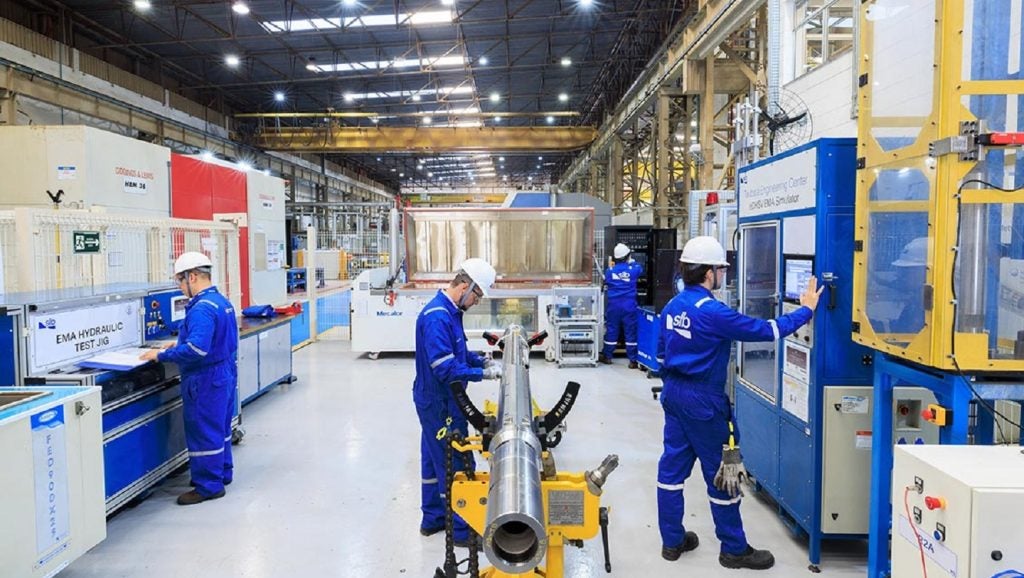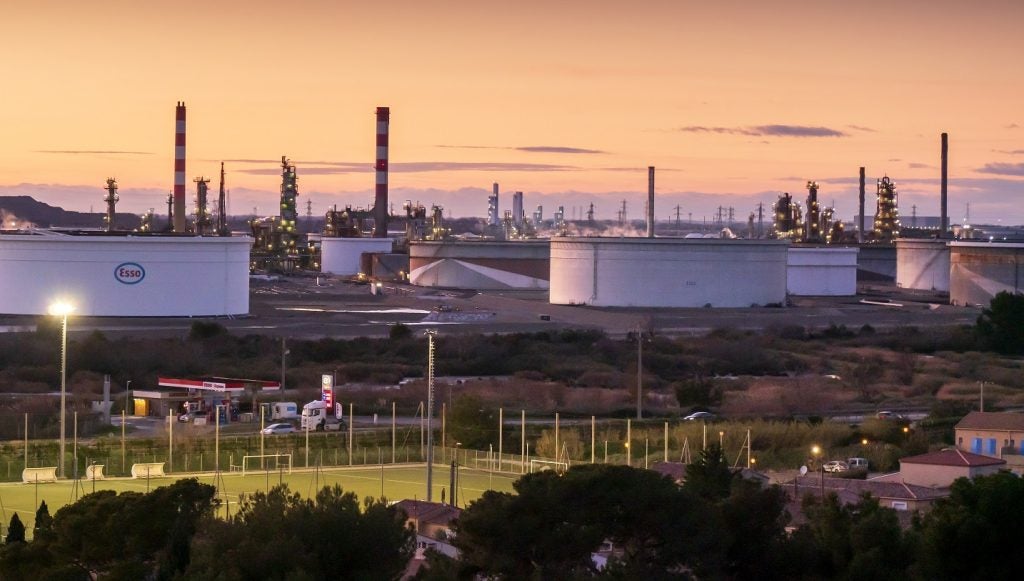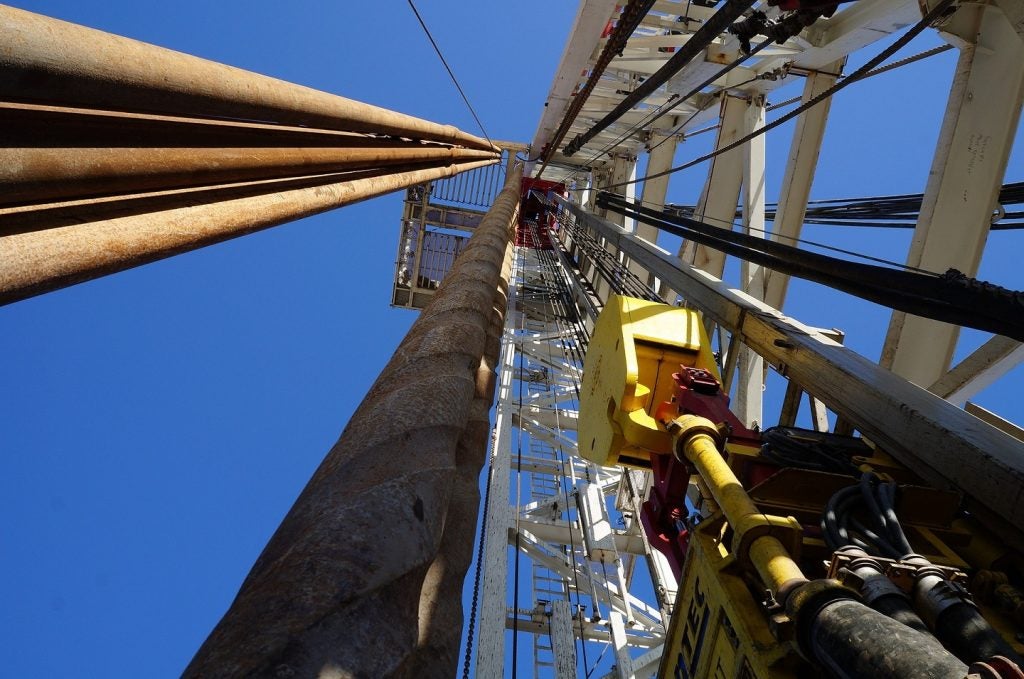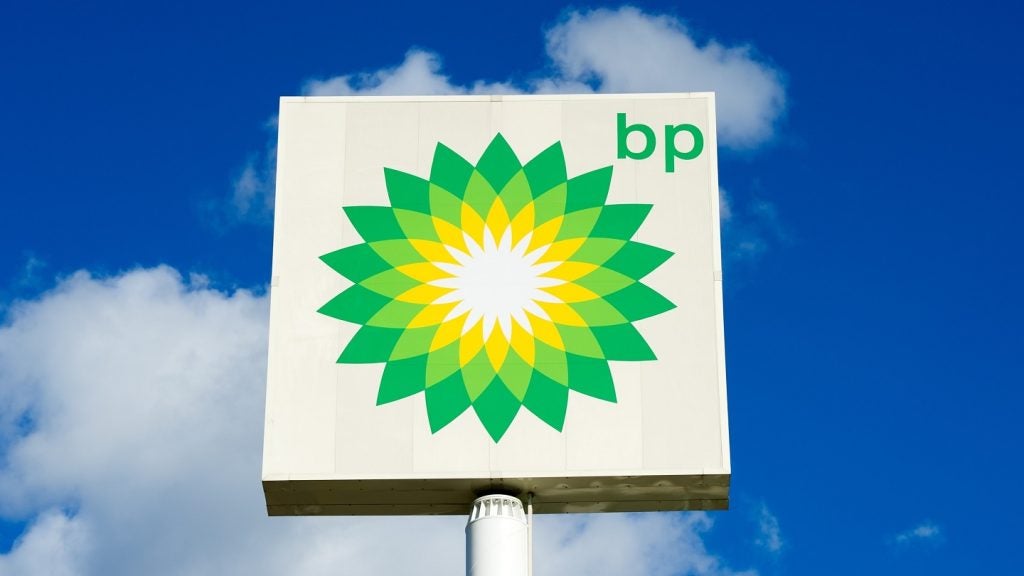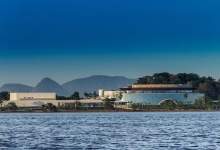

Over 90% of Brazil’s oil production comes from offshore. Most of this is from the Santos and Campos basins, but the country is keen to further exploit recent discoveries of oil in the deepwater pre-salt layer formed thousands of years ago by the separation of the current American and African continents.
In response to this vast new market GE has based its ninth global research centre in the country’s capital. The $500m Brazil Technology Centre will focus, among other things, on developing subsea separation and drilling technology for the pre-salt layer with the intention of exporting the technologies to other regions – a $1.2 trillion offshore market opportunity, according to GE.
The centre, a hub for GE’s customers in the region, also hopes to foster future Latin American industry leaders through its Crotonville leadership centre, as well as develop solutions for other industries such as aerospace, mining and healthcare. Kenneth Herd, general manager of the Brazil Technology Centre, tells us more about GE’s work in the region.
Heidi Vella-Starr: Why did GE decide to base the research centre in Rio?
Kenneth Herd: We evaluate regions on a regular basis for growth opportunities for various markets that we play in. We started this for the Latin American region in 2010 and determined this region and decided Brazil was the predominant choice. We converged in on Rio de Janerio for a number of factors – we had the access to technical talent and proximity to customers. Some of the factors were around GE’s participation in the Rio Olympics as a sponsor – a lot came together so we settled on Rio.
GE tends to take the longer view – especially in R&D – and so having hubs here [in] four segments, including oil and gas, has been a very important strategy for GE. 30 – 40% of our current R&D programmes are focused on the oil and gas segment.
HVS: GE has said the centre will develop solutions for oil production in Brazil’s offshore pre-salt layers?
KH: Pre-salt is a very important market for GE and an important growth opportunity for operators in the region, particularly Petrobras, but also a number of partners.
How well do you really know your competitors?
Access the most comprehensive Company Profiles on the market, powered by GlobalData. Save hours of research. Gain competitive edge.

Thank you!
Your download email will arrive shortly
Not ready to buy yet? Download a free sample
We are confident about the unique quality of our Company Profiles. However, we want you to make the most beneficial decision for your business, so we offer a free sample that you can download by submitting the below form
By GlobalDataWe expect to see majority of growth in this so-called pre-salt. The pre-salt fields tend to be further offshore, some 200km in deepwater at 2,000m plus depths, and there are some aspects of those fields that are challenging because they have a higher content of corrosive gas and in most cases they have a higher percentage of gas content in the wells.
The challenges particular to pre-salt have been identified by the operators and quantified and we well understand what the challenges are and over the last decade or so the operators, particularly Petrobras have identified some technology and operational road maps that require technical solutions.
HVS: And these are?
KH: In this part of the world the majority of the 30 platforms use risers and GE has a product in business called GE Well Stream, which manufactures and sells these risers to about 40% of the market in this region. As you go to deeper water pre-salt the weight of these risers, of course, increases and the weight that is being suspended from the floating platform also goes up. So the industry is looking for solutions to take weight out of these risers so they don’t have to add buoyancy or increase the size of the floating platforms to handle the suspended loads.
See Also:
In two years, Mexico will open up its oil and gas industry to foreign investment, ending Pemex’s monopoly of the market.
The research centre is also working on bringing a new lightweight, high strength materials to the product. In particular we are looking at a material called carbon fibre composites that is used in a lot of aerospace applications. GE has a very strong portfolio in carbon fibre and carbon fibre materials development and manufacturing for wind turbines etc and is bringing that technology to flexible riser development in Brazil.
HVS: What about the sub-sea processing solutions?
KH: As you go to the deeper pre-salt wells there is the need to move some of the processing and equipment from the top [of] the floating platform to the seabed, for example pumping [and] using pumps that are sitting on the seabed to basically help to base the pressure from the wells to bring the oil and gas to the surface. This is important because the oil pressure overtime is sufficient to lift the oil and gas to the surface so GE is looking at, with our partner operators, pumping technologies that can operate for many years on the seabed with the required reliability.
There are other processing technologies we are moving to the seabed one of them is water treatment. A lot of water that is coming from the produced wells today is pumped up to the top of the surface and is processed on the floating platform and, in most cases, returned down for injection into the wells. Operators are keen to see if we can do the water treatment on the seabed and reduce a lot power requirements and complexities of bringing the water all the way to the surface.
HVS: GE is working alongside companies such as Petrobras, BG Group and Statoil – how important are these collaborations?
KH: For us as a company, GE is moving more toward collaborating with customers more than we ever have. This Brazil opportunity is unique in that it is the first R&D centre we have worldwide that is so directly connected into customers, particularly the technology needs of customers.
There are regulation in the country that require operators to invest in R&D as a percentage of their total revenues. So that is a unique opportunity for suppliers like GE to work directly with our customers because they have R&D programmes that are driven by regulation to make those investments and mandated, so it is a win-win situation if the operators can meet their obligations on R&D and develop equipment and products that they can use to solve their operational challenges. I say win-win because that is obviously a win for GE.
HVS: What new technologies are you working on in regards to oil and gas?
KH: We have a variety of areas we are working on. Augmented reality is an example of technology we are bringing to a variety of services. We are looking at: how do we use the augmented reality and some of the data and analytics companies have been investing in – how we can bring them together to allow our service engineers, or our customer’s service operations, to visualise and bring data to the field service professionals in a very efficient way and be able to track and capture data from the field and run analytics on that data in an efficient way.
HVS: Has the low oil price affected your business at all?
KH: When the oil cycle is facing downwards the industry takes a close look at which of their exploration and production plans need to be evaluated based on the economics and some projects, I suppose, will be delayed.
In general, here in Brazil, because they are a net importer, they tend to be less immediately impacted by the global oil price because 100% of the production here is used – they use more than they produce here. They end up importing oil and so lower price of oil actually helps companies like Petrobras in that regard. Of course, they do have to sell the crude oil outside of Brazil so there is a bit of a balance and so lower oil price doesn’t, necessarily, benefit Petrobras in [the] long run but the fact is from where we are and the R&D projects they are supporting many of those do involve improved productivity and reduced power usage and some of the operations involved in post-salt today, those are the ones we think will certainly continue without impact.
Then the longer term ones in pre-salt, it remains to be seen whether the R&D investments will be impacted. One of the things we do know is that because of the R&D investment obligations as long as 2.5bbd or thereabouts that Petrobras currently operates, as long as those continue at that level and the expected growth of those operations, the R&D levels are still fairly substantial and that is true for the partner operators as well. We think the R&D investment isn’t directly affected by the price of oil but more the growth and expansion of operations.


.gif)

